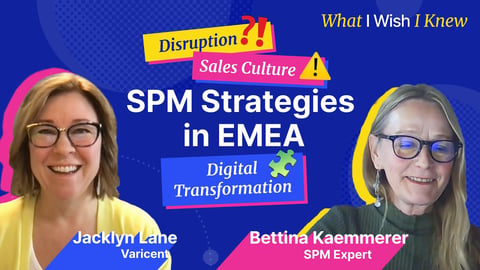Workplace inclusivity is a common phrase around the business world, but how does this translate into a workable, meaningful, and authentic way of not just recruiting, but developing and sustaining a diverse and inclusive workforce? Whether it’s you that’s being tasked with rolling out or delivering an inclusivity initiative, or you’re an employee that wants to know more, this guide should provide some framework while explaining the subtle differences between diversity and inclusivity in the workplace.
Workplace Inclusivity or Workplace Diversity – are they the Same Thing?
The short answer is no, but the two are very much interlinked. In a recent blog, Varicent talked about why diversity in the workplace matters. Diversity is about the mix, workplace inclusivity is ensuring people are treated fairly and respectfully. In other words, what’s the view like once you’re within a company, rather than peeking in from the outside?
How can you ensure that talented people — regardless of gender, sexuality, disability, race, or religion — don’t just take up employment with you, but feel comfortable making their voices heard in meetings and their presence felt and respected on projects?
“We often forget the ‘I’ in the D&I conversation. The challenge is in having a culture where all employees feel included. It’s a major investment to bring talent into your organization, so why bring them in if they’re not happy when they get here? You’ve got to get the inclusion part right.” Johnny C. Taylor, Jr., SHRM-SCP, president, and chief executive officer of the Society for Human Resource Management (SHRM)¹
1. Initiate with the Recruitment Process
During an interview process, once the competency questions are out of the way, there’s usually a time where company culture is discussed. That could be a few words about payday drinks, or a competitive sports event to encourage team bonding. While some candidates may be excited at the prospect of regular “Beer Fridays”, that would exclude those that don’t drink because of religious reasons or a lifestyle choice. And with the sporting event, not everyone is an athlete, and what’s the setup for those with a physical disability? A “party-hard, survival of the fittest” image of a business may attract a few alpha males, but it’s more likely to repel some candidates that don’t fit that box.
For HR and Talent Acquisition Managers, that does mean a rethink on what that culture really means and how deeply that permeates within the company and with a prospective hire.
With around 67% of job seekers in a recent Glassdoor survey claiming a diverse and inclusive workforce is important when considering job offers, the time to rethink company culture is now.
2. Educate Leaders on Workplace Inclusivity
If the decision-makers themselves remain in the dark about examples of exclusion and unconscious bias, it’s time to bring them into the daylight. Managers at all levels are expected to lead by example and be accountable, which means that they need to be one step ahead of any signs of discriminatory behavior. This is likely to involve coaching and shifting mindsets in some cases. When there are the constant pressures of targets and KPIs, it’s not always simple to make or take the time to embrace these “soft skills”, but it needs to be a key part of any development agenda.
3. Communicate and Monitor Changes
Workplace inclusivity must be more than a place to discuss and debate – real change need to be the output. Against every measure and objective, there needs to be a timeframe and goal. If a building needs to be more accessible for wheelchair users, how long will this take? Is there space in your offices for a prayer room? Can there be an impartial observer in meetings to ensure that everyone who wants to contribute can do so without fear of being spoken over or ignored?
And once there are some tangible measures in place, how will these be communicated? The language of change is also a factor; nobody wants to be patronized or preached to, and nobody wants to feel that in some way they may be responsible for someone feeling excluded.
A great way of monitoring the metrics around the changes you’re making with workplace inclusivity is by downloading and utilizing Varicent’s free Symon AI diversity and inclusivity app. This is designed to give you an ingoing breakdown of how diverse your business is, and whether further measures and steps are needed.
4. Celebrate and Respect Differences
The intention is to get to a stage where inclusion versus exclusion is no longer an issue. It’s a time where workplace inclusivity comes as second nature and is therefore celebrated. Whether this means marking the holidays of different religious groups, or as a woman, not having to ask permission for a “bathroom break”, it’s the big and small stuff that creates a working environment of equity and respect. While making changes to physical areas is one thing (gender-neutral toilets, separate non-meat fridges, adjustable height surfaces), there is the emotive stuff as well. Does office “humor” make certain people or groups uncomfortable? Are males “mansplaining” their way through meetings without regard to the opinions and input of others? These can all be addressed and fixed by there is a cultural handbook in place for best practice.
Change for the Better
Wholesale change is not something that can happen overnight, but solid steps forward over time can permanently transform and improve workplace inclusivity; especially when it’s something everyone really wants. As outlined in a Gartner study, By taking action rather than just talking about it, an inclusive group of colleagues was seen to improve team performance by up to 30 percent.
Find out more about this hot topic by joining our online masterclass on 25 Feb. Sign up today and put your business on a steady and rewarding path to workplace inclusivity.



